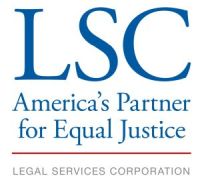Filter your results
Results 1 - 10 of 25. To narrow results enter search keywords or select filters.
A pension plan is an agreement between an employee, their employer and, for some jobs, the union. Sometimes, the employer contributes and sometimes the employee does as well. Employers are not required to have pension plans. A federal law, the Employee Retirement Income Security Act of 1974 (ERISA), sets the standards for private pensions. It also provides guaranteed pensions in some cases.
The federal Railroad Retirement Board handles this benefit program for eligible workers and their families.
General Eligibility
Like Social Security, Railroad Retirement benefits are based on months of service and earnings credits. Employees of railroads engaged in interstate commerce, some related industries, railway associations, and national railway labor organizations qualify for Railroad Retirement after 10 years of credited work.
In 1977, the Idaho Legislature passed a law which gives tenants a simple and quick method of forcing landlords to return security deposits that are owed to tenants...
Housing built before 1978 may contain lead-based paint. Lead from paint, paint chips, and dust can pose
health hazards if not managed properly. Lead exposure is especially harmful to young children and pregnant women. Before renting pre-1978 housing, lessors must disclose the presence of known lead-based paint and/or lead-based paint hazards in the dwelling. Lessees must also receive a federally approved pamphlet on lead poisoning prevention.
Simple Steps To Protect Your Family From Lead Hazards.
Once a creditor sues and obtains a judgment (court order) against a debtor they must follow a legal process to obtain payment. The creditor collects on a judgment through a "Writ of Execution" which directs a sheriff to seize the debtor's money, property, or real estate to pay the debt (in limited situations, money or property may be taken before a court enters a judgment). A creditor must collect on the debt within five years after a court issues a judgment, although a creditor can renew a judgment for additional five year periods.
Un acreedor puede requerirle a un empleador a desviar parte del sueldo de un empleado para pagar un fallo/ sentencia. El acreedor está limitado a tomar el sueldo de un deudor que: a) exceda treinta (30) veces el sueldo mínimo federal ($7.25 por hora vigente 24 de julio 2009), o b) es 25% del ingreso disponible. Cualquier exención cual permite al deudor mantener más de su sueldo aplica. Ingreso disponible es el pago neto del deudor después de las deducciones requeridas por ley, tal como impuestos, cuales son rebajados...
En 1977, la Legislatura de Idaho pasó una ley cual le da a inquilinos una manera sencilla y rápida de forzar a los dueños a regresar los depósitos de seguridad que se les debe a los inquilinos...
What is a garnishment? A garnishment is basically a legal collections tool where a creditor obtains a court order compelling an employer to withhold a portion of an employee’s wages. The amount that can be withheld is capped at 25%, however, the percentage may vary depending on the state issuing the garnishment and the type of debt. The cap applies to all creditors, meaning 25% is the most that can be withheld at any one time. Garnishments, however, are not limited to wages and can involve one time garnishment of bank accounts or personal property.
Social Security income is a lifeline for most seniors. Because it is considered so essential for survival, it has traditionally been protected from attachment by creditors. However, there are some exceptions.
Please review the guide below for more information.
Pagination
Close
Filter your results
Type
Topics
Tags
Our Partners
LSC's support for this website is limited to those activities that are consistent with LSC restrictions.

